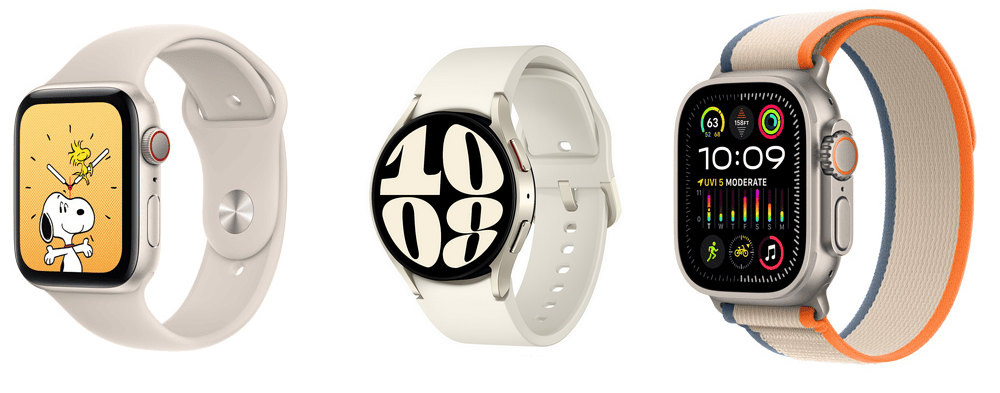The Evolution of Fitness: Exploring Activity Trackers and Smartwatches
In an era where health and wellness are at the forefront of societal consciousness, the integration of technology with physical fitness has become increasingly prevalent. Activity trackers and smartwatches have emerged as indispensable tools, revolutionizing the way we monitor and manage our physical activity. From step counting to sleep tracking, these devices offer a comprehensive approach to achieving and maintaining optimal health. In this article, we delve into the world of activity trackers, physical fitness, and smartwatches, exploring their evolution, functionality, and impact on our lives.
Activity Trackers: Pioneering Personal Fitness
Activity trackers, also known as fitness trackers or wearable activity monitors, have laid the foundation for the modern fitness revolution. These compact devices are designed to monitor and record various metrics related to physical activity, such as steps taken, distance traveled, calories burned, and even heart rate. With the ability to track both daily activities and exercise routines, activity trackers provide users with valuable insights into their overall fitness levels and progress towards their health goals.
The history of activity trackers can be traced back to the late 20th century with the introduction of pedometers, simple devices that counted steps. However, the advent of modern technology and the miniaturization of electronic components have propelled activity trackers into the digital age. Today's activity trackers feature advanced sensors, wireless connectivity, and sleek designs, making them both functional and fashionable accessories.
One of the key features of activity trackers is their ability to motivate and encourage physical activity. By setting goals, tracking progress, and providing real-time feedback, these devices inspire users to lead more active lifestyles. Whether it's taking the stairs instead of the elevator or going for a brisk walk during lunch breaks, activity trackers incentivize small changes that can lead to significant improvements in overall health and fitness.
Physical Fitness in the Digital Age
In an era characterized by sedentary lifestyles and increasing rates of obesity and chronic disease, the importance of physical fitness cannot be overstated. Regular exercise is not only essential for maintaining a healthy weight but also for reducing the risk of cardiovascular disease, diabetes, and other health conditions. However, busy schedules, lack of motivation, and limited access to resources often pose significant barriers to adopting and maintaining an active lifestyle.
This is where activity trackers and smartwatches come into play. By providing users with tangible data and actionable insights, these devices empower individuals to take control of their health and fitness. From setting personalized goals to tracking progress over time, activity trackers and smartwatches serve as invaluable tools for staying accountable and motivated on the journey towards better health.
Furthermore, the integration of gamification elements, such as badges, challenges, and rewards, adds an element of fun and competition to the fitness experience. Whether competing with friends, participating in virtual races, or earning achievements for reaching milestones, users are incentivized to push themselves further and strive for continuous improvement.
The Rise of Smartwatches: More Than Just Timekeepers
While activity trackers focus primarily on fitness-related metrics, smartwatches offer a more comprehensive approach to health and wellness. Combining the functionality of a traditional wristwatch with the features of a smartphone, smartwatches serve as versatile wearable devices that cater to a wide range of needs.
In addition to tracking physical activity, smartwatches offer a host of other health-related features, including heart rate monitoring, sleep tracking, and stress management tools. Some models even incorporate advanced sensors, such as electrocardiograms (ECG) and blood oxygen saturation (SpO2) monitors, to provide users with insights into their overall health and well-being.
Moreover, smartwatches are equipped with a variety of connectivity options, allowing users to stay connected and informed wherever they go. From receiving notifications and messages to controlling smart home devices and accessing navigation services, smartwatches offer unparalleled convenience and functionality on the wrist.
List of some Smartwatch models with pros and cons
There are numerous smartwatch models available on the market, each with its own set of features, designs, and functionalities. While it's impossible to cover every single model in detail, I can provide an overview of some of the most popular ones along with their pros and cons.
Apple Watch Series (e.g., Series 7, Series 6, SE):
Pros:
- Integration with the Apple ecosystem, seamless connectivity with iPhones.
- Wide range of health and fitness tracking features, including heart rate monitoring, ECG, blood oxygen level measurement, and sleep tracking.
- Large app ecosystem, allowing for a variety of third-party apps and services.
- Stylish design with customizable bands and watch faces.
- Optional cellular connectivity for making calls and accessing data without a phone.
Cons:
- Limited compatibility with non-Apple devices.
- Relatively high price compared to other smartwatches.
- Battery life may not last as long as some other models, especially with extensive use of features like GPS and cellular connectivity.
Samsung Galaxy Watch Series (e.g., Galaxy Watch 4, Galaxy Watch 3):
Pros:
- Compatibility with both Android and iOS devices, though functionality may be limited on iOS.
- Wide range of health and fitness tracking features, including heart rate monitoring, SpO2 monitoring, sleep tracking, and stress tracking.
- Sleek design with rotating bezel for intuitive navigation.
- Good battery life, especially on models with larger battery capacities.
- Integration with Samsung Health ecosystem for comprehensive health management.
Cons:
- Limited app ecosystem compared to Apple Watch.
- Some features may not work as well on iOS devices.
- Price can be relatively high, especially for LTE-enabled models.
Fitbit Smartwatches (e.g., Fitbit Sense, Versa series):
Pros:
- Extensive health and fitness tracking features, including heart rate monitoring, ECG, SpO2 monitoring, sleep tracking, and stress management.
- Long battery life, lasting several days on a single charge.
- Compatibility with both Android and iOS devices.
- Access to Fitbit's large fitness community and ecosystem.
- More affordable pricing compared to some other smartwatch brands.
Cons:
- Limited app ecosystem compared to Apple Watch and Samsung Galaxy Watch.
- Design may not be as stylish or premium as other smartwatch models.
- Some advanced features may require a premium subscription.
Garmin Smartwatches (e.g., Forerunner series, Fenix series):
Pros:
- Robust fitness tracking features tailored for athletes and outdoor enthusiasts, including GPS, heart rate monitoring, VO2 max estimation, and training metrics.
- Durable design with rugged build quality, suitable for outdoor activities.
- Long battery life, especially on models without touchscreens.
- Compatibility with both Android and iOS devices.
- Access to Garmin Connect ecosystem for in-depth fitness analysis and training plans.
Cons:
- Limited smartwatch features compared to other models, such as app support and smartphone notifications.
- Bulky design may not be suitable for everyday wear for some users.
- User interface may be less intuitive for those accustomed to touchscreen interfaces.
These are just a few examples of the many smartwatch models available on the market. When choosing a smartwatch, it's essential to consider factors such as compatibility with your smartphone, desired features, design preferences, and budget. Ultimately, the best smartwatch for you will depend on your individual needs and preferences.
Conclusion: Empowering Health and Wellness Through Technology
In conclusion, activity trackers and smartwatches have revolutionized the way we approach physical fitness and wellness. By harnessing the power of technology, these devices empower individuals to take control of their health, set and achieve goals, and lead more active and fulfilling lives. Whether you're a fitness enthusiast looking to optimize your workouts or someone seeking to improve your overall health and well-being, activity trackers and smartwatches offer a wealth of features and benefits to support your journey towards a healthier lifestyle. With continuous innovation and advancements in wearable technology, the future of fitness looks brighter than ever before.









